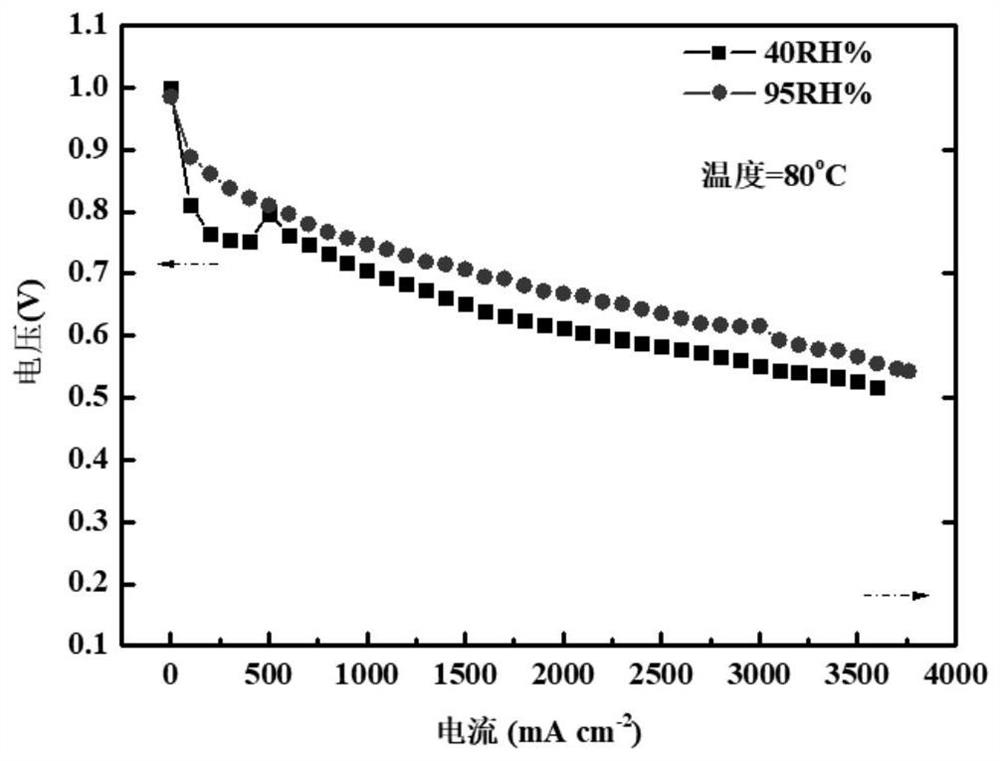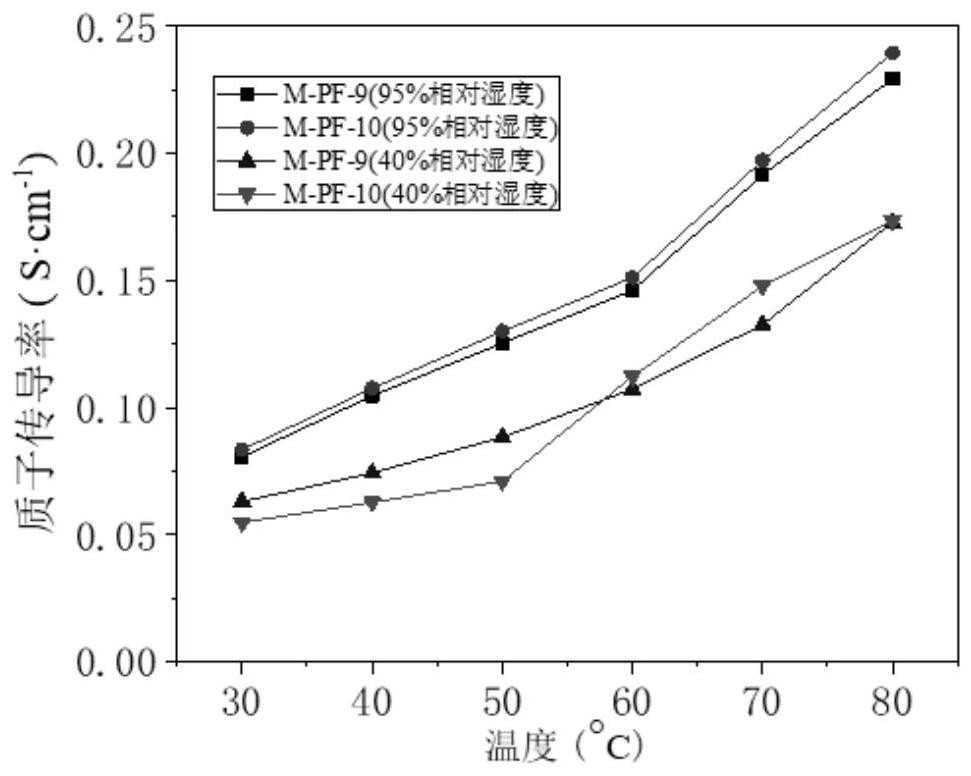Sulfonated polymer/modified polystyrene compound and ion exchange membrane
A technology of sulfonated polymers and polystyrene, applied in electrochemical generators, fuel cells, electrical components, etc., can solve problems such as poor hydrolysis stability, improve water retention capacity, improve proton transmission capacity, and improve barrier properties Effect
- Summary
- Abstract
- Description
- Claims
- Application Information
AI Technical Summary
Problems solved by technology
Method used
Image
Examples
preparation example Construction
[0124] The embodiment of the present invention also provides a method for preparing a sulfonated polymer / modified polystyrene composite, which is characterized in that it includes the following steps: 0.1%-95% of modified polystyrene and 5%-99.9% of sulfonic acid The polymers, on a mass basis, were prepared by a blending method.
[0125] In some embodiments of the present invention, the preparation method of modified polystyrene (PS-A / PS-B) comprises the following steps:
[0126] a. Disperse halomethylated polystyrene in an organic medium to prepare a polymer dispersion;
[0127] b, adding phosphoric acid functionalization reagent to the polymer dispersion of step a, and carrying out functionalization reaction;
[0128] c, adding a precipitant to the reaction solution in step b, and drying to obtain a polymer (PS-A) of a halomethylated polystyrene grafted phosphate group;
[0129] d-1, adding an acidifying agent to the reaction solution in step b, performing acidification, t...
Embodiment 1
[0174] Example 1: Thermally induced preparation of phosphorylated polystyrene
[0175] Weigh 10g of halomethylated polystyrene, dissolve it in 240g of N,N dimethylacetamide at 60°C, add 5 times the molar amount of halomethyl phosphite, and react at 140°C for 48h . Add acetone for precipitation to obtain an intermediate product, and acidify the intermediate product in 2M hydrochloric acid at 40 °C for 12 h to obtain phosphorylated polystyrene.
[0176] Halomethylated polystyrenes include:
[0177] The homopolymer polychloromethyl styrene (PVBC) obtained by the polymerization of the monomers, the functionality of the polymer is 100%, and the Mw is 27kg / mol;
[0178] The copolymer (Cl-PS-1) obtained by the polymerization of p-chloromethylstyrene and p-methylstyrene monomer, the functionality of the polymer is 61.6%, and the Mw is 72kg / mol;
[0179] Chloromethylated polystyrene (Cl-PS-2) prepared by trimethylchlorosilane and trioxane as chloromethylation reagents, and tin tetrach...
Embodiment 2
[0184] Example 2: Photoinitiated Preparation of Phosphorylated Polystyrene
[0185] Weigh 10 g of the halomethylated polystyrene in Example 1, dissolve it in 190 g of chloroform at room temperature, add 2 times the molar amount of halomethyl triethyl phosphite, at 50 ° C, 365 nm wavelength The reaction was carried out under ultraviolet light irradiation for 8 hours, and 10 g of trimethylbromosilane was added for acidification at 40 °C for 12 hours, then precipitated by adding water, and dried in vacuum at 60 °C to obtain phosphorylated polystyrene. The parameters of phosphorylated polystyrene are shown in Table 2.
[0186] Table 2
[0187]
[0188] In this example, the photo-induced phosphorylation reaction has few cross-linking side reactions, the Mw of phosphorylated polystyrene is close to the theoretical value, and it is easier to dissolve and blend, and the non-cross-linked structure is conducive to the transport of ions in the ion exchange membrane.
PUM
| Property | Measurement | Unit |
|---|---|---|
| thickness | aaaaa | aaaaa |
| tensile strength | aaaaa | aaaaa |
| tensile strength | aaaaa | aaaaa |
Abstract
Description
Claims
Application Information
 Login to View More
Login to View More - R&D
- Intellectual Property
- Life Sciences
- Materials
- Tech Scout
- Unparalleled Data Quality
- Higher Quality Content
- 60% Fewer Hallucinations
Browse by: Latest US Patents, China's latest patents, Technical Efficacy Thesaurus, Application Domain, Technology Topic, Popular Technical Reports.
© 2025 PatSnap. All rights reserved.Legal|Privacy policy|Modern Slavery Act Transparency Statement|Sitemap|About US| Contact US: help@patsnap.com



